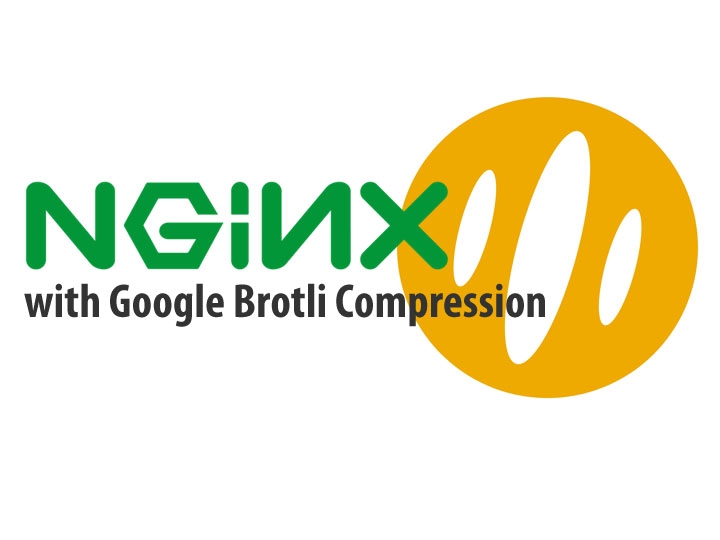Plesk is a modern alternative to cPanel and provides a web interface for managing websites in bulk.
Although my personal view on control panels is beyond negative, I’ve spent some time looking at how to get a missing feature for Plesk – Brotli compression.
Why did I bother? I’ve had a repository subscriber asking whether NGINX modules are compatible with Plesk.
My answer was that “Plesk is likely to have their own repo”.
Later this was confirmed and I simply got curious whether things with Plesk can be improved with supplementary packaging effort.
And so, meet the Better Brotli NGINX module for Plesk. Let’s go through some quick steps on bringing Brotli compression to Plesk.
Notes about Plesk own Brotli module for NGINX
For months, the GetPageSpeed repository has been the only source of the NGINX Brotli module for the Plesk’s own platform.
In late January 2021, Plesk shipped the Brotli module within its sw-nginx package.
The way it was done pretty much sucks for production due to several reasons:
- There is no clear version information of the Brotli module, so it is subject to 100% CPU bug
- What’s worse it’s not using a secure system Brotli library, so even security aside, it will have a higher memory consumption
To deal with all this mess, you can instead use our Plesk compatible NGINX Brotli module – The better Brotli NGINX module for Plesk.
Pre-requisites
- An RHEL-compatible distro (CentOS, Rocky Linux, AlmaLinux, CloudLinux, etc.)
- Latest Plesk
- 2 minutes of free time
Step 1. Install GetPageSpeed repository
sudo yum -y install https://extras.getpagespeed.com/release-latest.rpm
Needless to say, you have to subscribe.
Step 2. Install Brotli NGINX module
sudo yum install sw-nginx-module-brotli
Step 3. Disable Plesk Brotli module and Enable Better Brotli module
sudo plesk bin nginx -d brotli
sudo plesk sbin nginx_modules_ctl --enable better-brotli
PageSpeed module compatibility
As it stands, the PageSpeed NGINX module does not support Brotli compression internally.
You can use if together with the Brotli NGINX module, but you will have to disable internal PageSpeed compression by editing /etc/nginx/nginx.conf and specifying pagespeed HttpCacheCompressionLevel 0;. This is needed only if you have enabled the PageSpeed module:
http {
pagespeed HttpCacheCompressionLevel 0;
...
}
This will ensure that the Brotli compression works, at the cost of storing optimized assets uncompressed.
Step 4. Enable Brotli compression for all websites
Create the file /etc/nginx/conf.d/brotli.conf with contents:
brotli on;
brotli_types text/xml
image/svg+xml
application/x-font-ttf
image/vnd.microsoft.icon
application/x-font-opentype
application/json
font/eot
application/vnd.ms-fontobject
application/javascript
font/otf
application/xml
application/xhtml+xml
text/javascript
application/x-javascript
text/plain
application/x-font-truetype
application/xml+rss
image/x-icon
font/opentype
text/css
image/x-win-bitmap;
brotli_comp_level 4;
sudo nginx -t && sudo systemctl restart nginx
(we have to restart NGINX as opposed to reloading its config due to a bug in Plesk).
As an alternative to enabling Brotli for all websites, you can enable Brotli compression for a specific website only.
Open the website’s settings in Plesk admin and navigate to its Hosting & DNS -> Apache & nginx Settings .
Scroll down to “Additional nginx directives” and paste in the same lines as above.
Then similarly, restart NGINX.
Welcome to NGINX with Brotli support 🙂
Verify Brotli compression works
Via Command-Line
It’s easiest to launch the Terminal app (if you have OS X) and check if your NGINX emits Brotli encoded responses.
Simply use curl like this:
curl -IL https://example.com -H "Accept-Encoding: br"
As long as you see the response includes Content-Encoding: br, it means that NGINX properly handles Brotli compression.
Using CLI to check Brotli support, implies at least some knowledge of working with the Terminal app. So you can use your browser method instead.
Via browser
- Launch Chrome browser and navigate to your website
- Right-click anywhere on the opened page and choose “Inspect”.
- Developer tools sidebar will open.
- Click on “Network” in the developer tools sidebar, then “Doc”. This tells Chrome to log only requests to the main document.
- Now reload the page, and expand the log entry which was created by clicking it.
- Scroll down to “Response Headers” and find “Content-Encoding” header. The value of “br” means that the response was encoded via Brotli.
Troubleshooting
Enabling module
If running plesk sbin nginx_modules_ctl --enable better-brotli yields error:
START nginx_modules_ctl –enable better-brotli
exit status 1
There are 2 common reasons for this.
First, NGINX may be currently disabled in Plesk. Ensure that NGINX is enabled in the first place:
plesk sbin nginxmng -e
The other reason is misplacing the directive for loading the Plesk NGINX modules. In the file /etc/nginx/nginx.conf, ensure that the following line is located outside any context and not commented:
include /etc/nginx/modules.conf.d/*.conf;
The meaning of “outside any context” is that the directive outside of any curly braces { ... }. It should be simply at the top of the configuration file.
There’s more
NGINX modules for Plesk allow both performance and security. There are more than 50 Plesk-compatible NGINX modules available through our repository.
Also, be sure to check out secure NGINX configuration for WordPress in Plesk which leverages some of those modules.

